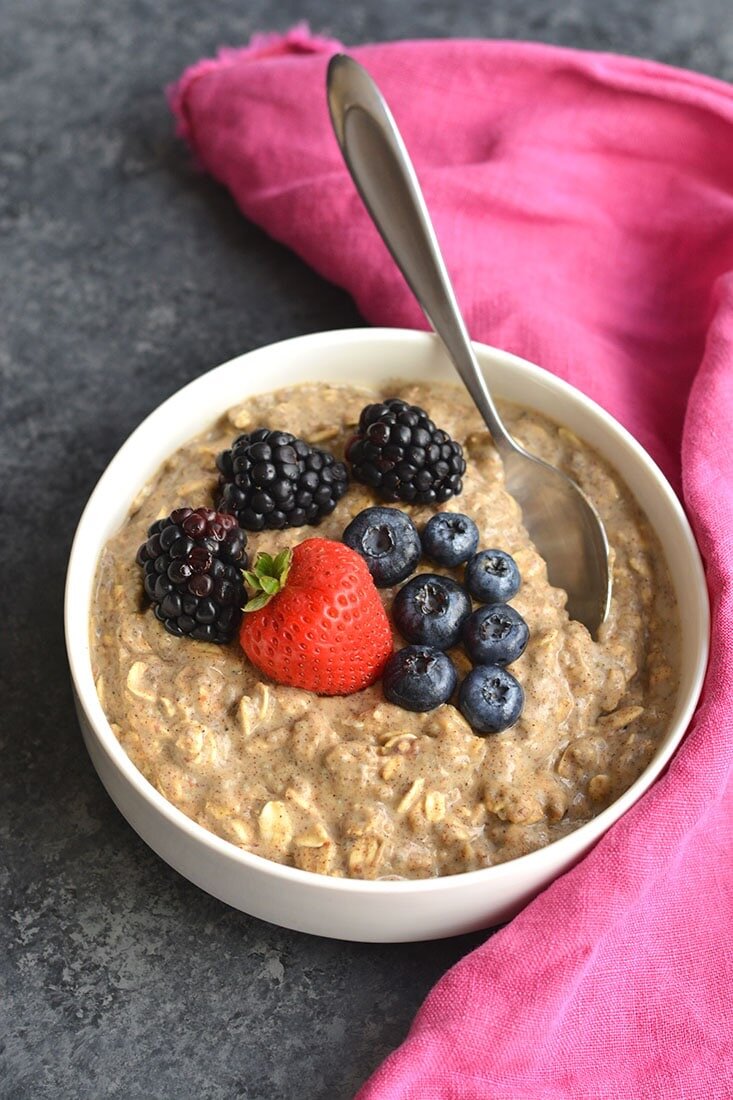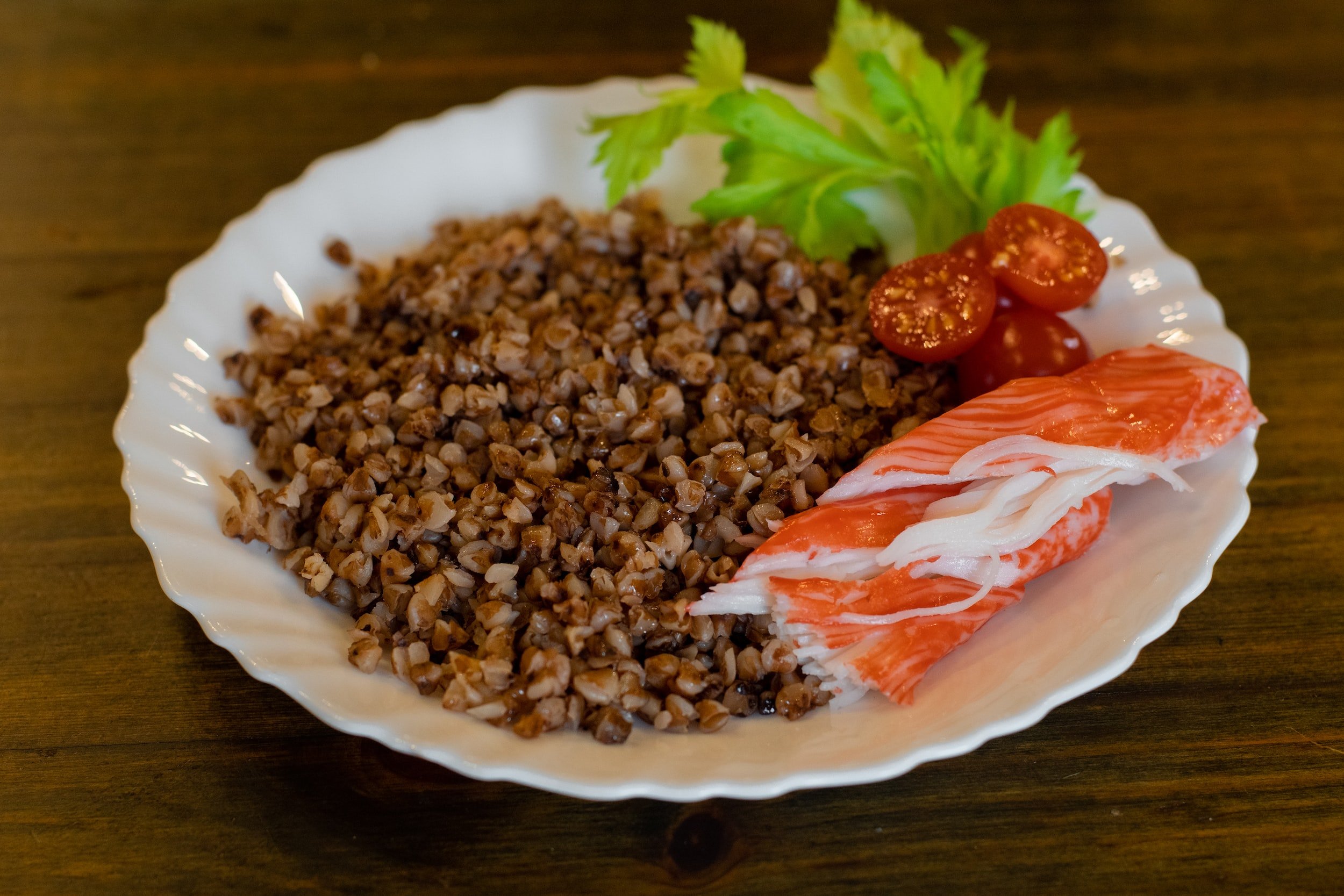TOP 10 FOODS TO EAT, PCOS & INSULIN RESISTANCE FRIENDLY
Eating healthy has oodles of positive benefits - for the body and the mind alike. When we eat well we feel good; when we feel good we’re happier when we’re happier we’re more productive… and the incredible cycle continues.
A vast number of foods are both healthy and tasty. By filling your plate with fruits, vegetables, quality protein, and other whole foods, you’ll have meals that are colourful, versatile, and good for you.
Here are my top 11 incredibly healthy foods:
KALE:
Given its incredibly low-calorie content, kale is among the most nutrient-dense foods in existence. Eating more kale is a great way to dramatically increase the total nutrient content of your diet.
Kale is a cruciferous vegetable known as one of the top superfoods on the planet.
Rich in vitamins K, A and C, along with other vital nutrients, the health benefits of kale include detoxification, heart support, cancer prevention and brain development in infants. Kale also promotes healthy vision and combats inflammation thanks to its antioxidant load.
There are many ways to incorporate kale into your diet, whether we’re talking smoothies, soups, salads or any other meal you can think of. However, be diligent in where you get your kale, as it’s one of the most heavy pesticides sprayed crops. Make sure you buy organic, 100 percent natural kale.
A cup of chopped, raw kale, weighing about 16 g contains:
8 calories
0.68 g of protein
1.4 g of carbohydrate
0.6 g of fiber
24 mg of calcium
0.24 mg of iron
8 mg of magnesium
15 mg of phosphorus
79 mg of potassium
6 mg of sodium
19.2 mg of vitamin C
23 mcg of folate DFE
112.8 micrograms (mcg) of vitamin K
80 mcg of vitamin A, RAE
This is coming with a total of 33 calories, 6 grams of carbs (2 of which are fibre) and 3 grams of protein.
DARK CHOCOLATE:
Yes, dark chocolate has compounds that offer health benefits and can be enjoyed without guilt, even daily. But the portion size matters, since too many bites, can contribute extra fat, sugar and calories and negate its health benefits.
Dark chocolate is rich in cocoa solids, which contain compounds known as flavanols. At high levels, cocoa flavanols have been shown to help lower blood pressure and cholesterol, improve cognition and possibly lower the risk of diabetes. Dark chocolate has the highest amount of cocoa flavanols; milk chocolate has less, and white chocolate has none.
A 100-gram bar of dark chocolate with 70–85% cocoa contains::
604 calories
7.87 g of protein
43.06 g of fat
46.36 g of carbohydrates
11.00 g of dietary fiber
24.23 g of sugar
12.02 milligrams (mg) of iron
230.00 mg of magnesium
3.34 mg of zinc
WILD CUT SALMON
A serving of salmon -- 3 to 4 ounces -- is about 200 calories. It's very low in saturated fat and a good source of protein. It's also one of the best sources of vitamin B12. It's also bursting in potassium and other nutrients like iron and vitamin D.
The vitamin B12 in salmon keeps blood and nerve cells humming and helps you make DNA. But for your health, the true beauty of salmon is its wealth of omega-3 fatty acids. Most omega-3s are "essential" fatty acids. Your body can’t make them, but they play critical roles in your body. They can lower the chance that you’ll have:
Cardiovascular disease (including heart attack and stroke)
Some types of cancer
Dementia
Alzheimer’s and other cognitive diseases, They can also ease the effects of rheumatoid arthritis
Experts recommend all adults eat at least two portions (a total of 8 ounces) of seafood a week, especially fish that are high in omega-3s like salmon. The FDA and the EPA both suggest that children eat 1-2 servings (about 2 to 4 ounces) of seafood a week starting at age 2.
Pregnant women and young children should avoid fish with the most mercury. Luckily, salmon is not one of them.
One three-ounce serving (about 85 grams) of cooked wild-caught salmon contains approximately:
155 calories
21.6 grams protein
6.9 grams fat
39.8 micrograms selenium (57 percent DV)
8.6 milligrams niacin (43 percent DV)
2.6 micrograms vitamin B12 (43 percent DV)
0.8 milligram vitamin B6 (40 percent DV)
0.4 milligram riboflavin (24 percent DV)
218 milligrams phosphorus (22 percent DV)
0.2 milligram thiamine (16 percent DV)
1.6 milligrams pantothenic acid (16 percent DV)
534 milligrams potassium (15 percent DV)
0.3 milligram copper (14 percent DV)
31.5 milligrams magnesium (8 percent DV)
24.6 micrograms folate (6 percent DV)
0.9 milligram iron (5 percent DV)
0.7 milligram zinc (5 percent DV)
OATMEAL:
The oatmeal nutrition profile boasts a good amount of protein and fiber, plus antioxidants and important micronutrients like manganese and selenium.
Some of the potential benefits of oatmeal nutrition include increased weight loss, reduced cholesterol levels and better blood sugar control. Research also shows that oatmeal benefits skin health and digestion as well.
Is oatmeal gluten-free? Although oats are naturally gluten-free, many types are processed in facilities where gluten-containing ingredients are produced as well, which can increase the risk of cross-contamination.
Furthermore, keep in mind that highly processed forms of oatmeal are often pumped full of additives, flavourings and artificial sweeteners and may not carry the same health benefits as regular oats.
Oats are loaded with important vitamins, minerals and antioxidant plant compounds. Half a cup (78 grams) of dry oats contains :
Manganese: 191% of the RDI
Phosphorus: 41% of the RDI
Magnesium: 34% of the RDI
Copper: 24% of the RDI
Iron: 20% of the RDI
Zinc: 20% of the RDI
Folate: 11% of the RDI
Vitamin B1 (thiamin): 39% of the RDI
Vitamin B5 (pantothenic acid): 10% of the RDI
Smaller amounts of calcium, potassium, vitamin B6 (pyridoxine) and vitamin B3 (niacin)
This is coming with 51 grams of carbs, 13 grams of protein, 5 grams of fat and 8 grams of fiber, but only 303 calories
EGGS
Eggs are a very good source of inexpensive, high-quality protein. More than half the protein of an egg is found in the egg white, which also includes vitamin B2 and lower amounts of fat than the yolk.
Eggs are rich sources of selenium, vitamin D, B6, B12 and minerals such as zinc, iron and copper.
Egg yolks contain more calories and fat than the whites. They are a source of fat-soluble vitamins A, D, E and K and lecithin, the compound that enables emulsification in recipes such as hollandaise or mayonnaise.
A single large boiled egg contains:
Vitamin A: 6% of the RDA
Folate: 5% of the RDA
Vitamin B5: 7% of the RDA
Vitamin B12: 9% of the RDA
Vitamin B2: 15% of the RDA
Phosphorus: 9% of the RDA
Selenium: 22% of the RDA
Eggs also contain decent amounts of vitamin D, vitamin E, vitamin K, vitamin B6, calcium and zinc
This comes with 77 calories, 6 grams of protein and 5 grams of healthy fats.
NUTS:
Packed with protein, fibre and essential fats, nuts are one of this season's best buys. A golf ball-sized portion (about 30g) of unsalted nuts makes a vitality-boosting snack and, unlike most other options, contributes a mix of valuable vitamins and minerals. All nuts have different nutrition credentials and will offer various health benefits
Nuts are highly nutritious. One ounce (28 grams) of mixed nuts contains :
Calories: 173
Protein: 5 grams
Fat: 16 grams, including 9 grams of monounsaturated fat
Carbs: 6 grams
Fiber: 3 grams
Vitamin E: 12% of the RDI
Magnesium: 16% of the RDI
Phosphorus: 13% of the RDI
Copper: 23% of the RDI
Manganese: 26% of the RDI
Selenium: 56% of the RDI
Some nuts are higher in certain nutrients than others. For instance, just one Brazil nut provides more than 100% of the Reference Daily Intake (RDI) for selenium.
AVOCADO:
Avocados are a delicious and nutritious fruit cultivated around the globe.
They are highly nutritious, and each serving contains a good amount of avocado fiber, plus healthy fats, potassium, vitamin K, folate and vitamin C. These account for the many avocado benefits.
Are avocados good for you? Potential benefits of avocado include improved heart health, increased weight loss, enhanced digestive health and better blood sugar levels. Avocado benefits may also include the ability to help improve mood; support eye, skin and hair health; fight cancer cell growth; and reduce the risk of arthritis and metabolic syndrome.
Avocados are also easy to use and can be incorporated into a variety of recipes. Try making an avocado dressing, avocado dip or avocado tuna salad.
Enjoy a few servings per week as part of a well-rounded diet to reap the rewards of this incredible ingredient.
One raw, California avocado without the skin and seed (about 136 grams) contains approximately:
227 calories
11.8 grams carbohydrates
2.7 grams protein
21 grams fat
9.2 grams fiber
28.6 micrograms vitamin K (36 percent DV)
121 micrograms folate (30 percent DV)
12 milligrams vitamin C (20 percent DV)
0.4 milligrams vitamin B6 (20 percent DV)
2 milligrams pantothenic acid (20 percent DV)
689 milligrams potassium (20 percent DV)
2.7 milligrams vitamin E (13 percent DV)
2.6 milligrams niacin (13 percent DV)
0.2 milligrams copper (12 percent DV)
0.2 milligrams riboflavin (11 percent DV)
39.4 milligrams magnesium (10 percent DV)
0.2 milligrams manganese (10 percent DV)
0.1 milligram thiamine (7 percent DV)
73.4 milligrams phosphorus (7 percent DV)
0.9 milligrams zinc (6 percent DV)
0.8 milligrams iron (5 percent DV)
200 international units vitamin A (4 percent DV)
In addition, this fruit also contains some omega-3 fatty acids, omega-6 fatty acids, choline, betaine, calcium and selenium.
BLUBERRIES
Blueberries are low in calories but loaded with antioxidants, fiber, vitamin K, manganese and vitamin C, along with many other important micronutrients.
There are many health benefits of blueberries, including improved heart and brain health, increased regularity, reduced inflammation, protection from certain types of cancer, and increased weight loss.
Opt for organic, fresh blueberries, and enjoy them raw to reap the most rewards in terms of nutrition. Blueberries can also be incorporated into your favorite recipes to add a touch of sweetness.
In combination with a healthy diet and lifestyle, a serving or two of blueberries each day can supply some major benefits to your health.
One cup of fresh blueberries contains:
84 calories
0 g of cholesterol
1.1 g of protein
0.49 g of fat
21.45 g of carbohydrate
3.6 g of dietary fiber
14.74 g of total sugars
That same one-cup serving provides:
24 percent of daily vitamin C
5 percent of daily vitamin B6
36 percent of daily vitamin K
Blueberries also provide:
9 milligrams (mg) calcium
0.41 mg of iron
114 mg of potassium
9 mg of magnesium
18 mg of phosphorus
1 mg of sodium
0.24 mg of zinc
9 mg of folate
Blueberries also contain copper, beta-carotene, folate, choline, vitamins A and E, and manganese.
BUCKWHEAT:
What is buckwheat? It is actually a seed as opposed to a whole grain, although it’s used in similar ways as grains like quinoa, barley or oats.
Benefits of this seed include supporting heart health; supplying antioxidants and polyphenols like rutin and quercetin plus fiber and plant-based protein; helping to prevent diabetes; fighting digestive disorders; and supplying vitamins and minerals like magnesium, iron and B vitamins.
Is it gluten-free? Though it can be used in the same way as whole grains like wheat and barley, this seed is naturally gluten free, which makes it a great choice for people with celiac disease or grain sensitivities. Swapping this seed with typical grains containing gluten may also be helpful for people suffering from digestive disturbances like leaky gut syndrome. Learn more about other ancient grains (including a variety of gluten free options)
Not only is this food rich in vitamins and minerals, but it is an excellent source of digestible plant protein. For every 100 gram serving, this food contains as much as 14 grams of protein, and 12 different amino acids to support growth and muscle synthesis. The protein content isn’t quite as high as certain beans and legumes, but it is higher than most whole grains.
One cup (about 168 grams) of cooked buckwheat groats contains approximately:
155 calories
33.5 grams carbohydrates
5.7 grams protein
1 gram fat
4.5 grams fiber
0.7 milligram manganese (34 percent DV)
85.7 milligrams magnesium (21 percent DV)
118 milligrams phosphorus (12 percent DV)
0.2 milligram copper (12 percent DV)
1.6 milligrams niacin (8 percent DV)
1 milligram zinc (7 percent DV)
1.3 milligrams iron (7 percent DV)
0.1 milligram vitamin B6 (6 percent DV)
23.5 micrograms folate (6 percent DV)
0.6 milligram pantothenic acid (6 percent DV)
3.7 micrograms selenium (5 percent DV)
TURMERIC:
The herb turmeric is one of the top nutrients in the world, whether we’re talking about the powder, extract or pills. While you may just now be seeing companies advertise it, turmeric isn’t new … In fact, it has a long history of use, particularly in Ayurvedic medicine and other traditional forms of medicine.
What turmeric does for the body is amazing. Health-wise the benefits range in everything from helping with blood clots and depression to combating inflammation, boosting skin health, regulating cholesterol and more.
One tablespoon (about seven grams) of ground turmeric contains approximately:
23.9 calories
4.4 grams carbohydrates
0.5 gram protein
0.7 gram fat
1.4 grams fiber
0.5 milligram manganese (26 percent DV)
2.8 milligrams iron (16 percent DV)
0.1 milligram vitamin B6 (6 percent DV)
170 milligrams potassium (5 percent DV)
1.7 milligrams vitamin C (3 percent DV)
13 milligrams magnesium (3 percent DV)
PROTEIN POWDER:
Protein powder is a common supplement that delivers a convenient and concentrated amount of protein in each serving.
It can be derived from both plant and animal sources, including whey, bone broth, hemp, pea, casein, brown rice and collagen.
Each type of protein powder offers a unique set of nutrients and health benefits and can be used to cater to your specific diet and goals, making it easy to find the best protein powders for you.
Protein powder can be added to many recipes, including smoothies, baked goods or sweets.
There are several different types of protein powder. Whey is the most popular protein supplement and the one that researchers have tended to focus on, but it is not the only one. Common types of protein powder include:
Whey: This water-soluble milk protein is popular among athletes. It is a complete protein, meaning that it contains all of the amino acids that the human body requires from food. The body absorbs whey protein quickly and easily.
Casein: This type of protein is rich in glutamine, an amino acid that may speed up muscle recovery after exercise. Casein comes from dairy, making it unsuitable for vegans and people with milk allergies. The body digests this protein more slowly, so it may be best to take it at night.
Hemp: Hemp seeds are complete proteins that also contain essential fatty acids. This makes hemp an excellent choice for vegans or those with dairy or soy allergies.
Protein Powder Made from Bone broth: is made by simmering different parts of animals, including bones and connective tissues, into a nutrient-rich broth, which can then be dehydrated and concentrated into a protein powder. Not only is protein powder made from bone broth highly nutritious, but it’s also available in an assortment of flavors, which is why it’s often dubbed the best tasting protein powder for baked goods and recipes.
Collagen Protein Powder: As the most abundant form of protein in the body, collagen is found in the muscles, skin, bones and blood vessels. However, collagen levels begin to slowly decline as you get older, resulting in symptoms like joint pain, wrinkles and hair loss. Taking a collagen supplement is an effective way to boost collagen levels and reverse the symptoms of aging to improve health and quality of life. The best form of a collagen protein includes several types, including from chicken collagen, bovine collagen, fish collagen and egg shell collagen.
Check my PCOS Friendly Meal Plans
Wha1500 calories, 1600 calories or for 1800 calories!
Gluten-Free, Dairy- Free & No Meat options available!












